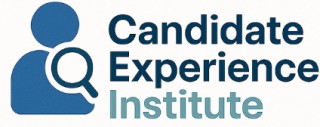Understanding the Importance of Onboarding
The Foundation of a Strong Onboarding Journey
Onboarding is more than just a formal introduction; it is a strategic process that sets the stage for new hires to integrate smoothly into their role and the company culture. A well-crafted onboarding experience not only increases employee retention but also accelerates the time it takes for new employees to reach full productivity. Organizations that prioritize effective onboarding processes often witness a noticeable uptick in employee engagement and satisfaction. The onboarding phase is a critical moment to showcase the company culture and to immerse new hires into the team dynamics. Through a combination of direct training, shadowing, and self-paced learning through onboarding software, companies can create a structured environment for new hires. Furthermore, effective onboarding minimizes the confusion and overwhelm associated with joining a new company. By addressing key administrative tasks early on, and providing comprehensive onboarding checklists, companies can alleviate unnecessary stress for new employees. This phase is crucial for answering questions, addressing concerns, and gathering feedback from new hires, ensuring they feel supported from the outset. By leveraging real time feedback and learning development strategies, companies can refine their onboarding program continuously, fostering a high quality experience that aligns with best practices in the market. As the business world evolves, so does the need to stay informed about the latest trends and technologies in onboarding. Navigating the hurdles of remote work emphasizes the importance of a flexible onboarding program that adapts to different working environments.Key Elements of a Successful Onboarding Process
Essential Foundations for Effective Integration
Creating a successful onboarding process is pivotal in shaping a positive employee experience from the outset. While each company's procedure might vary, there are several key elements that universally contribute to an effective onboarding strategy. One critical component is the establishment of clear and structured onboarding checklists that outline the necessary steps and tasks each new hire must complete. These checklists not only serve as a guide for new recruits but also ensure consistency across the company, helping to maintain a high quality standard in the onboarding experience. Integrating the company's culture and values into the onboarding experience is another vital element. Emphasizing the organization's ethos helps new hires understand the bigger picture and how their roles contribute to the company's objectives. This understanding fosters alignment with team goals and enhances the feeling of belonging within the team. Administrative tasks are also a significant aspect that can be streamlined through the use of onboarding software. By automating paperwork and other routine processes, companies can save time and minimize potential errors. This allows new employees to focus more on meaningful learning experiences and team engagement rather than bog down in tedious details. Incorporating hands-on training and real-time learning opportunities encourages hires to quickly adapt to their roles. Early involvement in projects and collaboration with team members can expedite their practical understanding of company operations and market dynamics. Finally, a feedback system is indispensable. Regular feedback, both formal and informal, from new hires will provide the company with insights into the effectiveness of their onboarding program. Embracing feedback onboarding practices allows for continuous improvement and adaptation to meet evolving employee needs. For a deeper exploration of how to enhance the candidate experience during onboarding, consider visiting this insightful resource.Challenges in Onboarding and How to Overcome Them
Tackling Common Obstacles in Employee Onboarding
Optimizing the employee onboarding process is crucial for any company aiming to enhance new hire experiences. However, many organizations face significant challenges during this phase. These obstacles, if not addressed, can lead to inefficiencies and a negative onboarding experience. One common issue arises from a lack of clear structure and consistency within the onboarding processes. An effective solution is to develop a comprehensive onboarding checklist that outlines all necessary tasks and timelines, ensuring that both the new hire and the team are aligned in their expectations. This checklist serves as a guide to navigate through administrative tasks, training, and integration with company culture. Another challenge is the overwhelming amount of information new hires must absorb in a short period. This includes everything from job-specific tasks to broader company policies and procedures. To mitigate this, companies can employ onboarding software to facilitate a more interactive and real-time learning experience. Such tools can support learning development by granting hires access to high-quality resources and real-time feedback. Employing a phased approach to training can also allow hires to gradually learn and retain critical information over time. Integration into the team is also a hurdle many new employees face. A structured mentorship program can foster relationships between new hires and experienced team members, easing the assimilation into the company culture and ensuring a supportive onboarding experience. Feedback onboarding is a crucial component that should not be overlooked. Implementing methods for continuous feedback from both new hires and existing employees can provide insights into areas of improvement. This feedback loop helps refine the onboarding processes to better meet the evolving needs of new team members. Ultimately, understanding these challenges and implementing strategic solutions empowers companies to create a seamless and effective onboarding program. This not only enhances the employee experience but also ensures that new hires will be productive and engaged team members. For more insights on improving the onboarding process, visit enhancing candidate experience through text recruitment.The Role of Technology in Enhancing Onboarding
The Integration of Technology in the Onboarding Journey
In today's rapidly evolving business landscape, technology is redefining the employee onboarding experience. With the aid of efficient onboarding software and applications, companies are streamlining their onboarding processes, ensuring that new hires will feel integrated and productive from day one. One of the pivotal benefits of incorporating technology into the onboarding process is the ability to automate administrative tasks. By utilizing advanced onboarding software, companies can handle processes such as paperwork, compliance, and role-specific training in a seamless manner. This not only saves time but also allows team members to focus on providing a more personal and high-quality onboarding experience. Moreover, technology enhances the learning development aspect of onboarding by providing interactive and engaging training modules. Employees can access these learning resources in real time, allowing them to learn and adapt at their own pace. This personalized training experience is invaluable in helping new hires absorb necessary information and develop the skills required for their roles. Feedback is another critical area where technology plays a significant role. By implementing feedback onboarding tools, companies can gather insights from new hires, ensuring that the onboarding program is continuously refined and aligned with best practices. This feedback loop not only improves the onboarding process but also enhances the overall employee experience by fostering a culture of open communication. Finally, the rise of digital onboarding platforms has enabled organizations to build comprehensive onboarding checklists that ensure no detail is overlooked. These checklists can include essential tasks ranging from introducing new hires to team members and company culture, to setting job expectations. When onboarding processes are meticulously planned and executed with the help of technology, companies are better equipped to provide new employees with a seamless transition into their roles. In conclusion, the integration of technology in the onboarding journey is not just about efficiency. It plays a transformative role in ensuring a comprehensive onboarding program that supports new hires in experiencing a smooth and enriching entry into their new job.Measuring the Success of Your Onboarding Program
Evaluating the Effectiveness of Your Onboarding Strategy
Measuring the success of your onboarding program is crucial for ensuring that new hires will integrate smoothly into the company culture and become productive team members. The onboarding process is not just about completing administrative tasks; it is about providing a high-quality employee experience that sets the tone for their journey within the organization.
Key Metrics to Track
- Time to Productivity: Assess how quickly new employees can perform their job tasks independently. This metric can indicate the efficiency of your training and learning development processes.
- Employee Retention Rates: Track the retention rates of new hires over specific time frames. High turnover may suggest gaps in the onboarding experience or mismatches in expectations.
- Feedback from New Hires: Gather real-time feedback from new hires about their onboarding experience. This can provide insights into areas needing improvement.
- Engagement Levels: Measure engagement through surveys or informal check-ins to understand how connected new employees feel to the company and their team.
Utilizing Onboarding Software for Insights
Onboarding software can be a valuable tool in tracking these metrics. Many applications offer features that allow you to download onboarding checklists, automate feedback collection, and monitor progress in real time. These insights can help refine your onboarding processes and ensure they align with best practices.
Continuous Improvement Through Feedback
Feedback is a powerful tool for continuous improvement. Regularly review the feedback collected from new hires and use it to refine your onboarding program. Engage with team members to ensure that the onboarding process supports their needs and expectations. This collaborative approach can lead to a more cohesive and supportive onboarding experience.
Future Trends in Employee Onboarding
Innovative Practices Shaping Future Onboarding
As organizations continue to recognize the strategic value of an effective onboarding process, future trends are emerging that promise to enhance the experience for new hires. These innovative practices not only focus on refining the initial onboarding experience but also ensure that new employees feel integrated into the company culture from day one. To remain competitive in attracting top talent and engaging employees, companies are adopting these trends at an increasing rate:- Personalized Onboarding Experiences: Moving away from one-size-fits-all strategies, the future of onboarding will likely involve tailoring experiences to the unique needs and backgrounds of hires. This could involve leveraging onboarding software to customize learning and training paths, ensuring that every new team member's experience aligns with their role and responsibilities.
- Real-time Feedback Mechanisms: Continuous improvement in onboarding processes will be fueled by robust feedback mechanisms. Real-time feedback from new hires will provide invaluable insights into the onboarding checklist and program effectiveness, allowing companies to make swift adjustments and enhance the employee experience.
- Integration of Advanced Technologies: Augmented reality, virtual reality, and AI-driven platforms are gradually finding their place in employee onboarding. These technologies offer immersive training scenarios and interactive applications that expedite the learning process. Furthermore, onboarding software equipped with AI can help streamline administrative tasks, ensuring hires will efficiently integrate into the team.
- Comprehensive Onboarding Checklists: As companies aim to cover every aspect of a new hire's journey, detailed onboarding checklists are becoming crucial tools. These include administrative tasks, learning development milestones, and team introductions, ensuring no critical step is overlooked.







